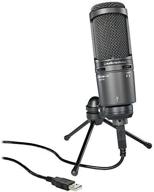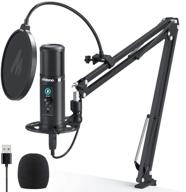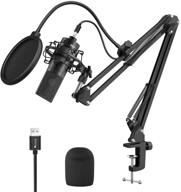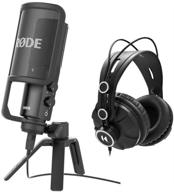
Review on 🎤 Enhanced Microphone Preamp & Channel Strip Processor - dbx 286s, Mono 4-way by Kelsey Hoss

Bought for Noisegate
Reviewed by a user who only uses voiceover recordings. Does not apply to tools. I mainly use my home office, video and web conferences. I don't need to compress voiceovers/announcers/conference calls etc. I don't need a de-esser. I don't need a crappy two-band EQ amp. None of this matters for recording speech levels. However, I've found that using a little bass boost helps mask the reverberation caused by an acoustically raw room. There is an output gain which I don't understand, it seems like it is a compensation gain from another processor but doesn't have a clear relationship. Other than that, I like it because I couldn't find a prosumer. Noise canceller to accompany my USB audio interface beyond that. I don't understand why audio interface manufacturers didn't just add noise reduction. This isn't desirable for people planning to release their audio, but for live audio in the home office, it's a great feature. There are many videos on this topic on YouTube. Most of them appear to be incorrect or misguided advice. If you're recording speech for YouTube or just web conferencing, turn the preamp gain so the mic is pointing at a green LED on the preamp in the meter, and then turn it back a few clicks. Turn up the audio interface gain until you get an average of -15 to -12 dB on the software meter (you can use a DAW, I just use OBS or Audacity). Turn off everything except the noise gate. As for the noise gate, it could really shine if it had attack and release controls. In my opinion, every YouTube setup guide I've found is wrong. It has two controls labeled Threshold and Ratio. Hard-coded attacks and releases are unregulated. Every video I've seen says to rotate the threshold at room noise level until it closes and then rotate another 4 clicks. Then set the ratio to 2:1. This does not work for me. This leaves the door too open and causes the attack and release (slow and fast, respectively, in my opinion) to trip over each other. The threshold simply tells you at what noise level you want the gate to open. The setting is how open the door is when the gate is closed. The leftmost gear knob means the door is almost fully open (i.e. the gate does nothing when active). The right door is almost completely closed when the gate is active. First nothing but ambient noise (try to keep computer fans etc. as far away from the microphone as possible), keep an eye on the sound level meter of the DAW, start at the threshold and turn the ratio all the way to the left. Nothing but the usual ambient noise in the room, turn the doorstep until the red light is on, turn no more. Now adjust the ratio until you see the DAW sound level meter stays at zero, go no further. That's the best you'll get with it.
- Great for me
- Expensive Insurance
New products
Comments (0)
Top products in 🎤 Microphones

Enhanced Performance: Audio-Technica AT2020USB+ Cardioid Condenser USB Microphone (Renewed)

19 Review

Professional USB Microphone with Zero Latency Monitoring - MAONO AU-PM422: 192KHZ/24BIT Cardioid Condenser Mic with Touch Mute Button and Mic Gain Knob for Recording, Podcasting, Gaming, YouTube

19 Review

🎙️ Fifine USB Streaming Microphone Kit: The Ultimate Condenser Studio Mic for Professional Recording

15 Review


17 Review





